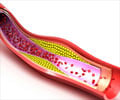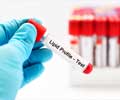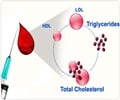A 72 year old mystery about cholesterol synthesis which has been bugging scientists for so long has finally been cracked by Nobel laureates
A 72 year old mystery about cholesterol synthesis which has been bugging scientists for so long has finally been cracked by Nobel laureates.
The Shoenheimer effect has long been unexplained, but not now. The first evidence for end-product feedback regulation of a biosynthetic pathway was demonstrated when Rudolph Shoenheimer observed that mice synthesized large amounts of cholesterol when fed a low-cholesterol diet, but this synthesis stopped when the mice were fed cholesterol.In later years, many details of this cholesterol feedback were worked out, but the main mechanism by which cells in the liver sense cholesterol and thus regulate cholesterol production remained unknown.
Joseph Goldstein and Michael Brown finally solve the mystery of the Shoenheimer effect. The authors show that Insig (insulin-induced gene) proteins are essential components of this cholesterol feedback response. They create mice lacking the two mammalian Insig genes -– Insig1 or Insig2 in the liver. On a normal chow diet, the mice over accumulate cholesterol and fats in the liver, but levels of SREBP's and other SREBP target genes (molecules that sense cholesterol and regulate its synthesis) were not reduced. Normally, cholesterol intake reduces SREBP and the genes that synthesize cholesterol and fat, but this response was dysfunctional in the transgenic mice such that fat and cholesterol synthesis was not suppressed. The transgenic mice also had dysregulated levels of HMG-CoA reductase protein, the precursor for cholesterol synthesis.
The data presented indicate that the entire pathway for SREBP processing functions in the liver. Further, this pathway is responsible for the synthesis of cholesterol as well as the feedback suppression of synthesis when cholesterol is taken in from the diet.
Source: By Journal of Clinical Investigation











